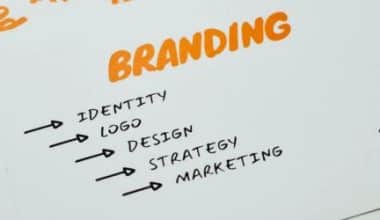Intangible property often referred to as incorporeal property, is something that a person or business can own and transfer to another person or company but does not have a physical substance, such as a brand name or intellectual property. Copyright, trademarks, and inventions are all examples of statutory creations. It excludes both tangible assets such as real estate (land, houses, and fittings) and private possessions (ships, cars, tools, etc.). Learn more as you read further, about intangible property, the example, rights, tax, misc intangible property. As well as intangible and tangible property. Keep reading!
Intangible Property
Intangible personal property has worth because of its advantages and worth recognition. One of the most common types of intangible personal property is intellectual and misc property. This kind of property is taxed in some jurisdictions. Life insurance contracts, securities investments, royalties agreements, or partner interests are examples of intangible personal property. Goodwill, research and development (R&D), plus patents are the most common types of intangible property in businesses.
Some of these intangibles are classified as capital assets. And is also included in a company’s financial statements, while others are not.
In order to estimate a fair market value of intangible things, the corporation may need to conduct extensive research. Once a value is assigned to this property, the corporation may be able to deduct some of the costs associated with its creation. The expense of compiling a customer or client mailing list, or employing a lawyer to file a patent application, are two examples.
>> Read Also: Certified Funds: Overview, How they Work, Examples, Real Estate Benefits
What Is Intangible Property?
It is a property that does not draw its worth from physical features. However, the intangible property includes patents, software, trademarks, and licenses. While, business furniture and equipment, on the other hand, are forms of tangible personal property.
Misc Intangible Property
Misc intangible property is defined by the IRS to include, commercially transferable interests in objects that fall into the following categories:
Software for computers.
Patents, inventions, formulae, processes, designs, patterns, trade secrets, and know-how are all examples of intellectual property.
Copyrights, as well as literary, musical, and creative works.
Trademarks, trade names, and brands are all terms for the same thing.
Franchises, licenses, and contracts are all options.
Methods, programs, systems, procedures, campaigns, surveys, research, predictions, estimations, customer lists, and technical data are all examples of methods, programs, systems, and processes.
>> Learn about: ACCOUNTS PAYABLE GUIDE SIMPLIFIED! (+ Detailed formula breakdown)
As you can see, the intangible property covers a wide range of categories. Many of which are tied to creative or intellectual property. The definition and protection of this property are important in an expanding digital society. Because intellectual property is recognized as an asset that should be recorded on the books. Therefore, businesses take considerable effort to correctly value it.
These methods for calculating the property’s valuation are difficult. And they usually include calculating both times spent building the asset as well as its uniqueness or appeal.
Example of Intangible Property
Apple and Google, for example, have a lot of intangible property to keep track of. These companies have a lot of intangible assets, ranging from product patents. As well as intellectual property to project software and business systems, licensing, and brand names.
Because the intellectual manpower and creativity represented by this intangible property is the major product that these companies supply. However, protecting these assets is vital to their continuous existence.
These designs will be termed intangible property if you were in the creative sector. And want to start selling clothes patterns that you developed and created. You’d have to safeguard them for the sake of your brand name, as well as for legal and accounting reasons.
>> Read also: Cash Accounting: Best Cash Accounting Methods In 2023 (+ Detailed Guide)
Tangible and Intangible Property
The term “assets” refers to everything a business has. Tangible assets are material in nature; they include cash, merchandise, vehicles, equipment, and real estate. Intangible assets are those that do not have a physical form, such as accounts receivable, prepaid expenses, patents, and goodwill.
To fully appreciate an asset’s value, it’s important to understand its potential long-term benefits, as it has more value in the long run than actual assets. Simply because tangible goods depreciate faster. For instance, a patent for a novel technology may generate revenue for years. Whereas, the products based on that invention may have a limited lifespan.
>> Discover more: Cloud Accounting: Simple Walk-through Guide For Beginners (+ free tools)
Intangible Property Rights
The term “Intangible Property Rights” refers to all of the following that PBBC uses and owns or licenses in connection with its business operations on or after December 31, 1996. Regardless of a jurisdiction in which any of the foregoing were issued, are pending, or exist. Patents and applications for patents in the United States and abroad, registrations of trademarks and other marks, and registrations of trade names.
Furthermore, labels or other intangible property commercial rights registered user entries. And applications for any of the foregoing registrations or pages are included. Additionally, rights in the United States and elsewhere, as well as copyright registrations and applications. Trademarks as well as other trademarks registered in the United States and abroad. As well as corporate names, trade names, labels, registered and non-registered commercial rights, and company names.
>> Read also: Government Accounting: Meaning, Certifications, Jobs, Standards
Also, sensitive and technical information, whether patented or not, patentable or not patentable. Additionally, shop rights and other rights are connected to all the above in whole or in part.
Intangible Property Tax
Certain states put a tax on intangible assets. However, within the rest of those states, the companies that fall under this category are those with assets that exceed county borders, such as telephone companies, pipeline companies, wireless firms, airlines, and railroads. Certain states tax all assets, tangible and intangible (these are typically the more expensive states); some tax both tangible real and personal property; and still others tax only physical real property.
>> Read also: Introduction to Financial Accounting
Is a House Intangible Property?
It excludes tangible property such as land, buildings, and fixtures, as well as personal property (ships, automobiles, tools, etc.).
What Types of Assets Are Intangible?
Intangible assets include goodwill, brand awareness, and intellectual property like patents, trademarks, and copyrights. In contrast to tangible assets, which include land, vehicles, equipment, and inventories, intangible assets exist
Is a Bank Account Intangible Property?
Included under the category of intangible personal property are bank accounts, equities, bonds, insurance policies, and retirement benefit accounts.
What Are the 5 Intangible Assets?
Goodwill, brand equity, Intellectual properties (Trade Secrets, Patents, Trademark, and Copyrights), licensing, customer lists, and research and development are the primary types of intangible assets. Usually, intangible asset values are not reported on the balance sheet.
Which Ownership Is Intangible?
Incorporeal ownership: This is ownership that is intangible in nature.
What Are the Risks of Intangible Assets?
Top Five Risks to Intangible Assets
- Leakage or theft of critical confidential information.
- Companies cannot prove they own their intangible assets.
- Hazardous use of open source code software.
- Not owning a brand or brand infringement.
- Threatened or actual IP litigation.
Can Intangible Assets Be Touched?
Intangible assets are untouchable. Even though intangible assets don’t have a physical location, they are still valuable to your business. Intangible assets are long-term assets, which means they will be used by your company for more than a year.
Conclusion
If you work in a creative field and decide to sell your own clothes designs. You would want to keep them safe for the sake of your brand’s reputation as well as for legal and accounting concerns. Read more articles on finance and it is related via the Businessyield blog






